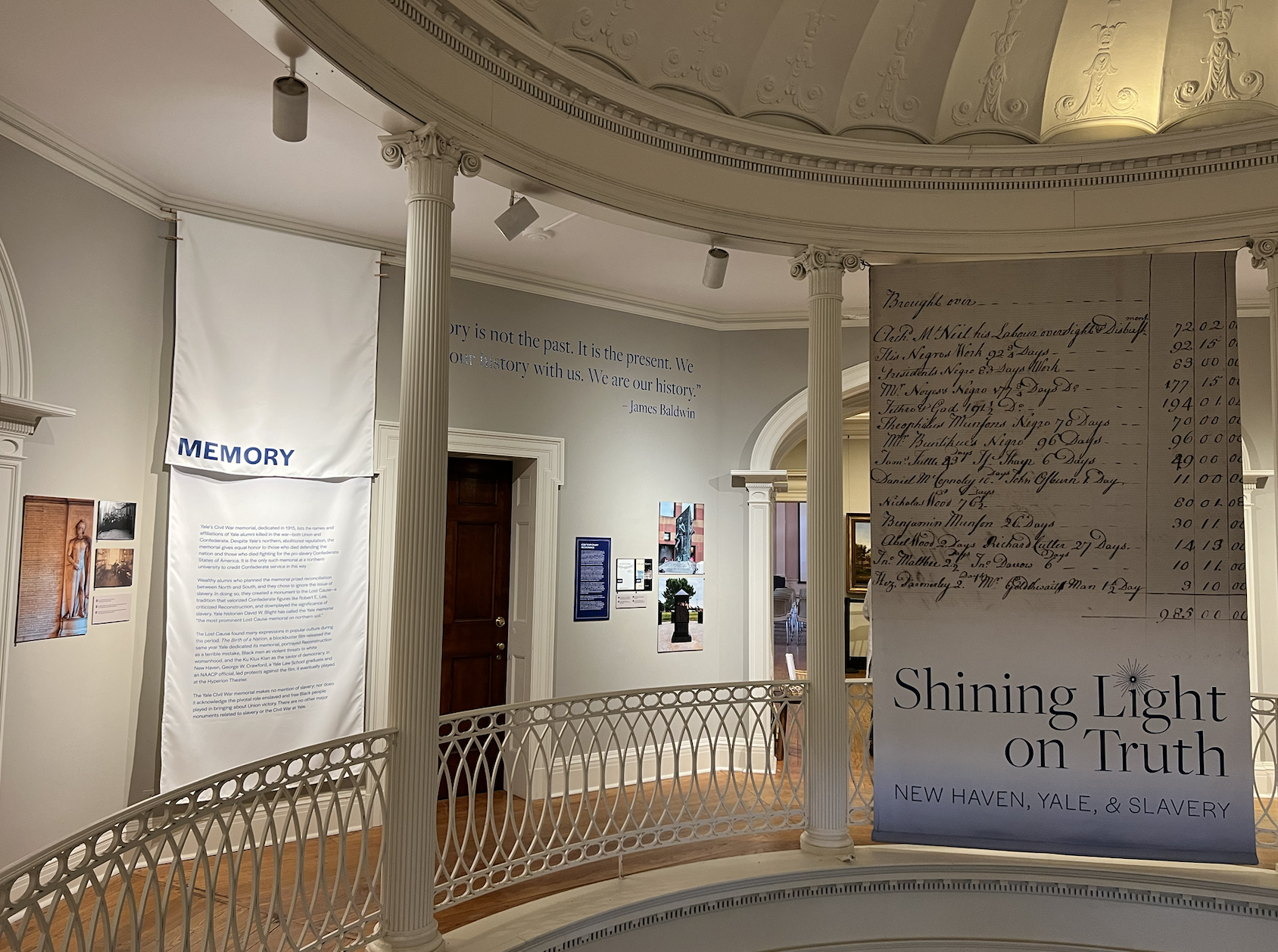‘Shining Light on Truth’ exhibition opens
The New Haven Museum premieres its newest exhibition featuring the essential history of enslaved and free Black people in New Haven and at Yale.

“Shining Light on Truth,” the newest exhibition at the New Haven Museum, premiered on Saturday, Feb. 17 to present the essential and complicated role enslaved and free Black people played in the founding of New Haven and at Yale.
Curated by Michael Morand ’87 DIV ’93, Director of Community Engagement at the Beinecke Library, with Charles Warner Jr., the exhibition illuminates a history kept alive in archives and memory over the past three centuries, drawing on the key findings of the Yale and Slavery Research Project. The project launched in 2020 following President Peter Salovey’s call to investigate how the university’s past intertwined with slavery in New Haven. Extraordinary effort was made to uncover and disseminate the parts of history that “the dominant culture chose to ignore, bury, or forget,” according to the exhibition summary.
“Official institutional history tends toward hagiography, a fancy word for focusing on the upturned faces and the triumphs of the firsts,” said Michael Morand, the exhibition’s lead curator, in his opening remarks. “But this is not a history that reckons honestly, and it is problematic in an institution focused on ‘lux et veritas,’ light and truth.”
Morand took a moment to explain that the Yale mantra, “lux et veritas,” proves hypocritical when the university strategically and systematically underemphasized, skewed or outright omitted portions of its past in a way that marginalized the Black community.
He argued that one could not have “light and truth” when only partial histories were acknowledged and when important and influential figures went unnamed. It was for this reason that Morand entitled the exhibition “Shining Light on Truth,” emphasizing that there were portions of the truth previously left hidden.
“History is made up of struggle, contradiction and resistance,” said Morand. “The stories we gather here today to know, to remember and, most importantly, to share, are stories of great gravity, stories of real humanity and stories that, here at Yale, we present with institutional humility. These stories are local stories that are tied to the global crimes against humanity of the slave trade, of enslavement.”
Throughout his remarks, Morand called attention to the 1831 proposal to instate the first HBCU in New Haven, a proposal that was struck down before reaching fruition. As such, the exhibition features an “1831 College Room” with framed portraits, historical recounts and biographical information of the first 224 identified Black students to have attended Yale University.
The curators decided to feature these students from the 1830s and 1840s to learn more about their lives at Yale and beyond, prompting conversation of what could have been had the 1831 HBCU college proposal been approved in New Haven.
“We’ve identified 224 students so far, and those present 224 or more topics for additional research,” said Jennifer Coggins, the community engagement archivist of the Beinecke Rare Book and Manuscript Library. “There is so much potential for further research here about the history of Yale, the history of Black life and community in New Haven and the history of higher education in the U.S.”
The “1831 College Room” is intended to pay tribute to the earliest Black students of Yale, as well as to highlight Black scholarship, achievement and excellence.
The “Shining Light on Truth” exhibition more generally celebrated Black resistance and community building while exploring topics including the economy, trade, Black churches and the memorialization of the 20th century.
Drew Walker, the daughter of the exhibition’s designer David Jon Walker ’23 MFA, commented on the aspects of the exhibit she found most impactful.
“The board that contains the notes of runaway slaves really stuck out to me because of the way they’re described,” said Walker. “It’s how I would describe a lost dog or cat; they weren’t seen as humans.”
The exhibition complements the recent publication of Yale and Slavery: A History by David W. Blight with the Yale and Slavery Research Project.
According to the exhibition, the book analyzes the significant role that slavery and enslaved Black peoples played in the establishment of Yale, answering President Peter Salovey’s call to investigate the university’s historical involvement with slavery, the slave trade and abolition.
Hope McGrath — the Research Coordinator for Yale, New Haven and Connecticut History at the Beinecke Rare Book and Manuscript Library and the Lead Researcher on the Yale and Slavery Research Project — shared her insights regarding the impact of the exhibition’s premiere.
“I think the most important thing that visitors will come away with is an understanding of how important and central Black people were to the making of New Haven and Yale for over three centuries,” said McGrath. “I hope Yale students will visit the exhibit, and really engage with this history, in an ongoing way throughout the summer.”
The “Shining Light on Truth” exhibition will remain open all summer for free at 14 Whitney Ave.
Correction, Feb. 22: This article has been corrected to include Yale affiliations and fix misspelled names.







